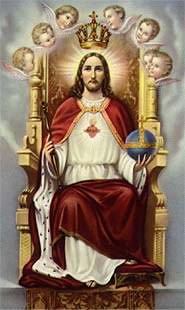
What is the meaning of the Assumption of the Blessed Virgin Mary? Did she really die? Did she really go to heaven body and soul?
The dormition and assumption of Mary was not recorded in the Canonical books of the New Testament. However, as early as the second century, many Apocryphal books had been written in many local Churches – one of them, attributed to St. James, recalls the Assumption. Although these Apocryphal books are not inspired, they have many elements of ancient tradition scattered in them.
Note why this book is not considered inspired: It was not written by the Apostles or their disciples/contemporaries. It was not reflected in the early liturgy of the Church, it was not recognized by the major Churches of Rome, Alexandria and Antioch to be authentic. And therefore it does not reflect authentic Christian doctrine. It is likely the product of some Gnostic sects in the second century that were influenced by Greek philosophy. However the book and other Apocrypha are invaluable in their information. This book is one of the main sources about the Assumption.
In the Tradition of the early Christians, Mary lived with the Apostles after our Lord ascended to heaven. She probably lived in Ephesus with John the Apostle. When her death was imminent she felt her Son will take her and she told the Apostles around her. When she died Thomas who was preaching in India was not there. He had a vision that Mary passed away so he hurried back. Since Thomas doubted the Resurrection of Christ, the tradition attributes to him another doubt that of the Assumption. In the story, the Apostles upon Thomas’ return opened Mary’s tomb but found it empty. This confirmed that her body was taken up to heaven.
Thus the doctrine of the Assumption has been with us since the second century. But why was Mary taken up to heaven? What did she do to deserve this unprecedent honour? The answer is simple if you look at the icon of the Dormition of the Theotokos. You see there Mary laid in the casket, like anyone who dies. You see around her the Apostles. The closest are John, who is quite sad, and Luke too. But Jesus standing on top is carrying a baby in his hand. Who is this baby? It is also Mary. So in the icon there is Mary’s body and also Mary being carried by Jesus. The meaning of the Assumption is here:
As Mary carried Jesus in her womb and when he was a child, he also carries her when she is old and weak. Further more, she is always obedient to him as he as a child was obedient to her. Whenever Jesus asked her something, she always comforted him, and now whenever she asks him something, her prayer is always answered.
Mary points us to Jesus. She does not replace him. She witnesses to him. And this leads us to the Chrism oil which the Church puts on the newly baptized so that he/she witnesses too to Christ. The Chrism oil is made up of 36 perfumes. The Church is telling us that when you are becoming a witness to Christ, you will be full of joy, peace and love. You will receive the gifts and fruits of the Holy Spirit. Be not afraid: Christ has overcome our sins. He is alive and Mary is the greatest witness of him.
Based on a lecture by Fr. Georges Farah, Ph.D., on August 15, 2008, Solemnity of the Assumption, at Jesus the King Church, Toronto

